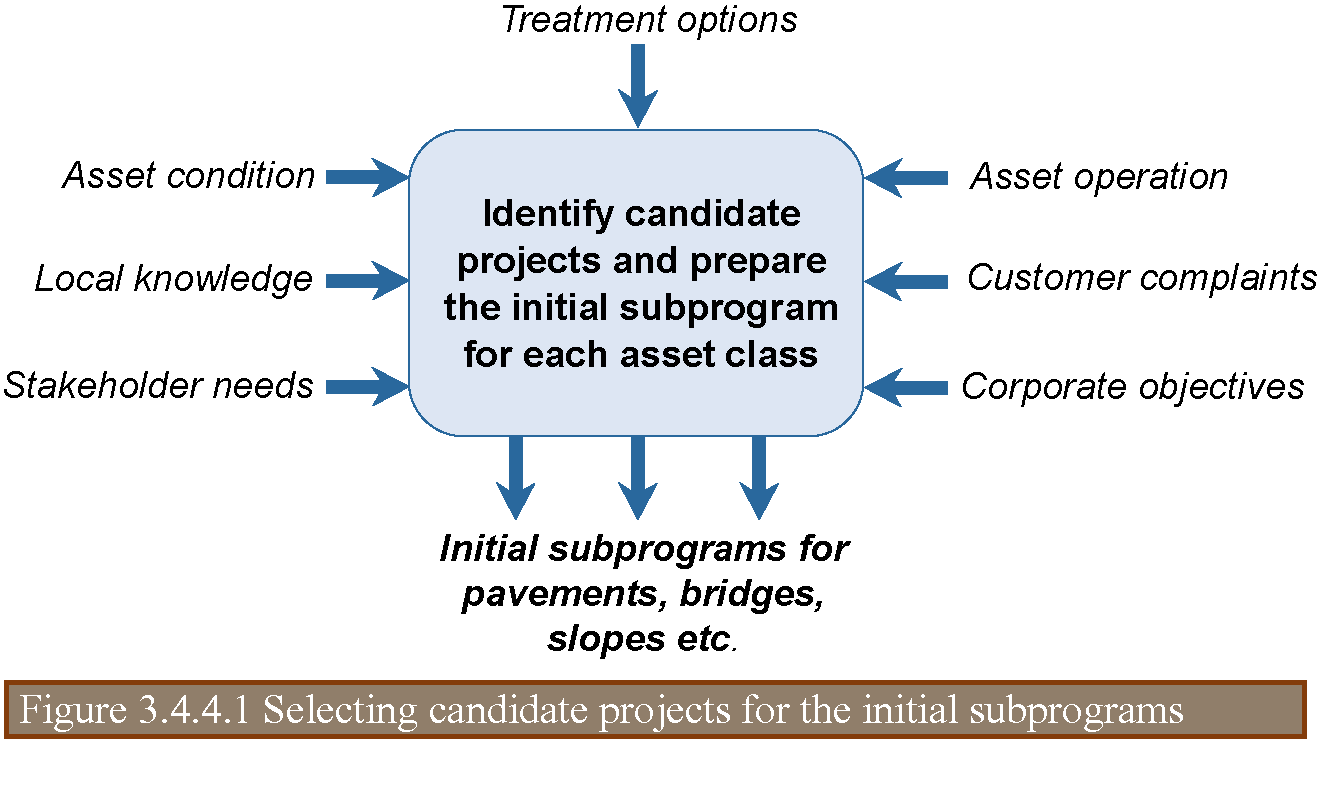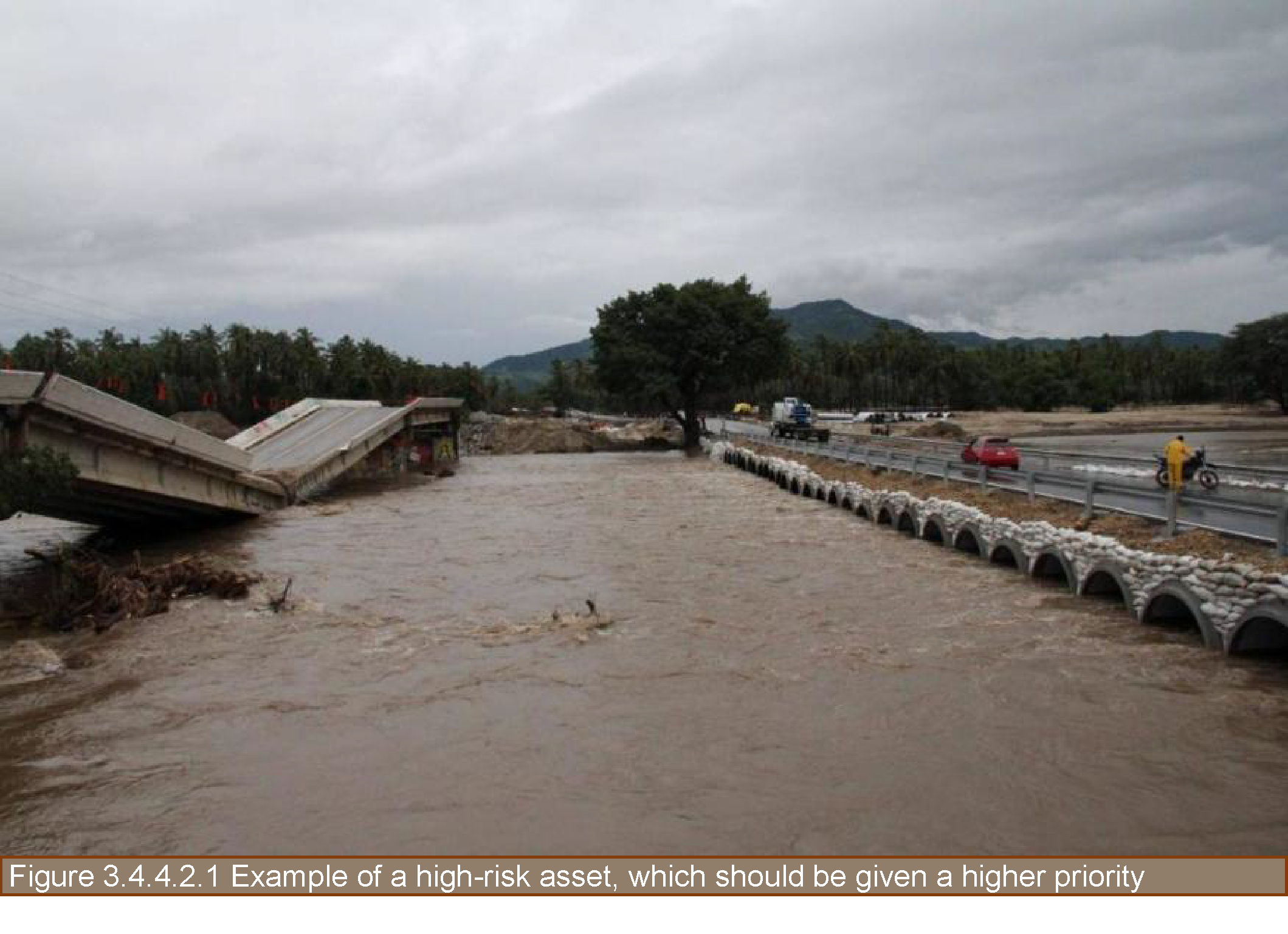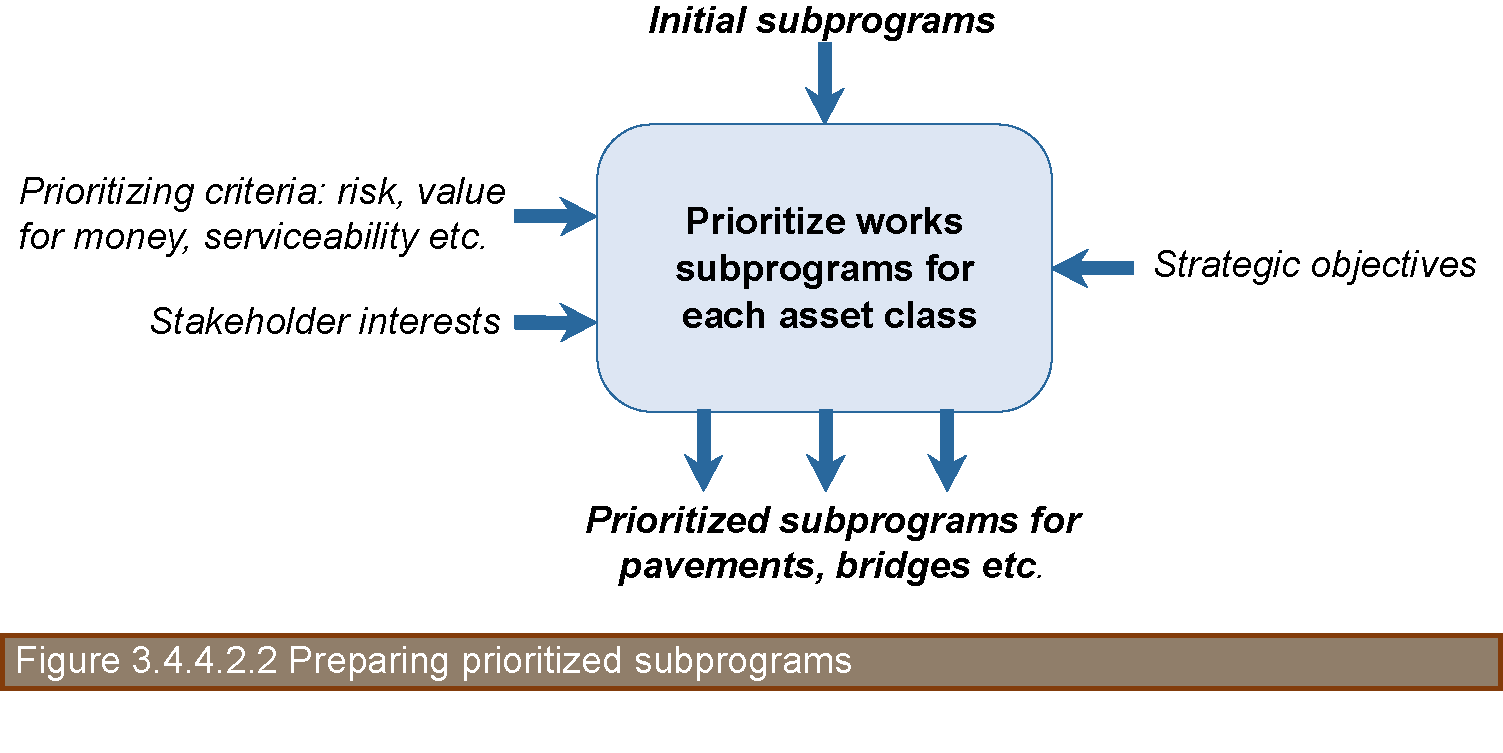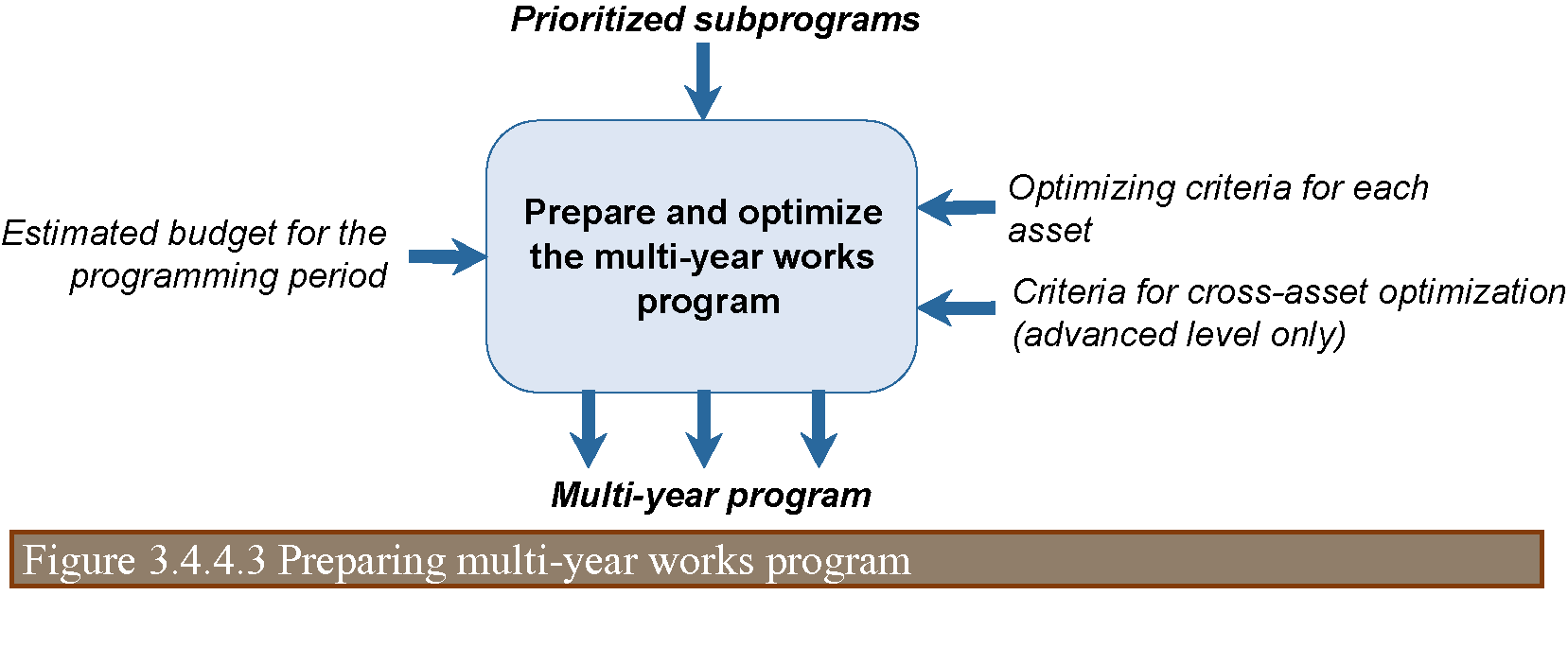

The overall process of developing works programs and allocating resources to individual projects can be depicted as a sequence of stages, as shown in Figure 3.4.4.

The identification of candidate projects implies the analysis of a given asset (e.g., a pavement section or a bridge) to determine what actions, if any, should be taken to maintain or improve its performance (Cambridge Systematics et al. 2002-2). This analysis relies on information sources like the following: condition surveys, safety inspections, knowledge of local staff, stakeholder needs, accident claims, and requirements to meet corporate objectives. Data from condition surveys and safety inspections should ideally be available from the asset management system, in some cases through advanced platforms such as GIS (UKRLG and HMEP 2013)
A comprehensive approach to project identification may include the following steps (Austroads 2002):
In order to define the projects required to close the gaps identified from the above steps, several treatment alternatives may be evaluated for each asset. Road management systems such as pavement, bridge, accident, and other management systems have been developed over the years to streamline the analysis of alternative works. At this stage, evaluation may include assessing the economic benefits of each option, particularly in the case of pavement assets.
The final lists of candidate projects obtained by identifying the optimal intervention option for the various assets may be referred to as the total needs program (Austroads 2009). Figure 3.4.4.1 contains a simplified representation of the programing stage concerning project identification and the preparation of initial programs.

Prioritization is basically a method of arranging proposals on new lists that indicate which projects are to be funded first (Austroads 2009). Each new list corresponds to a prioritized subprogram per asset class. The prioritization process is built upon a set of criteria involving aspects such as physical condition, safety, risk, and economic feasibility.
The initial works program usually includes assets whose performance has fallen below specified standards in terms of condition or safety measures. It may also comprise assets subject to high levels of risk, such as those located in areas of extreme weather conditions as well as those attracting the interest of stakeholders for other reasons (e.g., political or socioeconomic).
Because available budgets will in most cases be insufficient to address all needs, safety-critical assets or those having the highest level of risk (Figure 3.4.4.2.1) will normally be put at the top of the list.

Candidate projects should also be prioritized depending on their lifecycle return on investment to ensure that value for money is achieved, particularly in the case of assets such as pavements, structures, or lighting (UKRLG and HMEP 2013). Again, road management systems usually help performing this task.
Modern prioritization procedures call for applying a multi-criteria approach in which factors such as sustainability, stakeholder requirements, and social benefits are combined with serviceability, safety, and value for money. This approach requires assigning appropriate weights to each factor depending on the institutional vision.
It should be noted that agencies at the proficient maturity level might not be in a position to apply the multi-criteria approach described above, while agencies at the basic level usually only use serviceability and economic return as criteria for prioritizing.
Inputs and outputs of the prioritization stage are illustrated in Figure 3.4.4.2.2.

Multi-year programs comprise projects for the various asset classes to be executed within periods from three to five years (UKRLG and HMEP 2013). When information is available, programs can be developed for longer periods, e.g., 10 or more years. The preparation of multi-year programs is an essential phase of the programming process where project-level needs are reconciled with network-level resource constraints and performance goals.
The multi-year program supports financial planning by demonstrating what projects needs to be done and where and when they are to be undertaken. This planning must be reviewed annually and updated using the latest information available.
A multi-year program should indicate the amounts of funding corresponding to routine, preventive, and periodic maintenance, as well as resources intended for rehabilitation and construction (Austroads 2009). It should also contain details of the specific works considered for budget allocation. These features may be challenged by senior decision makers, so multi-year programs need to be robust and based on reliable information.
The list of projects to be included in the multi-year program is compiled by selecting projects from the prioritized program and adding up the costs estimated for each project until the forecasted budget is exhausted. At the advanced maturity level, the asset management plan and the investment strategy serve as a basis for determining which projects should be selected.
For projects around the budget ceiling or those requiring significant investment, additional data may be required to verify any assumptions made. The actual benefits from obtaining these data should be carefully assessed when the costs and risks involved are significant (UKRLG and HMEP 2013).
Project selection from prioritized programs often involves an optimization process. In this context, optimization refers to selecting investment options from various alternatives with the aim of achieving the highest benefits from constrained resource levels (Austroads 2009). One of the ranking criteria used for optimizing the available budget is the incremental benefit-cost ratio, which seeks to maximize the economic benefits for each additional unit of expenditure (Morosiuk et al. 2006).
Various management systems provide optimization modules for conducting impact analyses of different funding scenarios (Austroads 2009). Scenarios that might be considered include current constrained funds, incremented funds, reduced funds, and changes in the level of service offered. Results can then be presented to senior management to either support a particular funding scenario or examine various scenario options.
In performing program optimization, considerations such as the following may also be addressed (UKRLG and HMEP 2013):
Optimization of works programs has been traditionally carried out separately for the various asset classes, with a different budget ceiling established for each class. Using this approach, the resulting multi-annual program is actually made up of as many subprograms as the number of asset classes included in the programming process. Organizations at the advanced maturity level of asset management consider the implementation of methods for optimizing resource allocation across asset classes, using optimization processes based on a multi-criteria approach similar to that described for the prioritization stage.
Figure 3.4.4.3 shows the main information flows occurring at this stage of the programming process.

As mentioned above, organizations at the basic level only support development of annual works programs. In this case, the preparation and optimization of the multi-annual program is omitted or, more precisely, the tasks described above are performed using an analysis period of one year, and cross-asset optimization is not addressed.
The multi-annual program should be reviewed annually to update the list of projects with the highest priority that can be delivered from the available budget and produce an annual works program or annual plan (UKRLG and HMEP 2013).
In generating the annual program, consideration must be given to projects deferred in the last year, the backlog of needs, and the updated availability of resources (Austroads 2009). Projects in the annual works program should already have undergone a detailed design process and be ready for delivery. This enables contractors to plan the works properly and minimize any potential risks. In project design, the collection of additional detailed data on the involved assets should be considered to ensure that the proposed intervention produces the expected outcomes. Also, a more detailed cost estimate for each project should be made allowing a suitable contingency for risk (UKRLG and HMEP 2013).